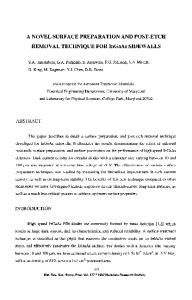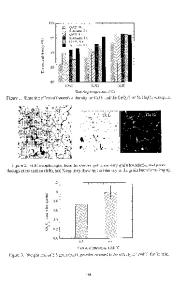A novel implant removal technique by endoscopy
- PDF / 1,079,074 Bytes
- 7 Pages / 595.276 x 790.866 pts Page_size
- 103 Downloads / 354 Views
TECHNICAL NOTE
Open Access
A novel implant removal technique by endoscopy Chang Heng Liu1,2†, Wen Lin Yeh1,2,3,4†, Ping Jui Tsai1,2, Kuo Feng Fan1,2, Hung Wei Cheng3 and Jian Ming Chen1,2,4*
Abstract Background: Routine implant removal after fracture healing remains controversial. However, it has been suggested that implant removal should be performed in cases of joint impingement, painful scar adhesion, and implant malposition. Entrance selection is relatively critical in patients with poor soft tissue conditions or sloughing coverage. We propose an innovative technique using endoscopy. Methods: Consecutive surgeries of endoscopic implant removal performed between 2005 and 2016 by a single experienced arthroscopic surgeon were included. Overall, 73 patients were enrolled; 44 were not eligible for inclusion and were excluded from the study. Results: Twenty-nine patients, including 32 surgical sites, were included. Twenty-four plates and 166 screws were removed using this technique. There were five complications during the follow-up period (range, 0.5 to 104 months; mean, 8.8), including one broken screw, one persistent knee joint contracture, and three wound dehiscence. There were no infections or neurovascular injuries. Conclusion: Implant removal using endoscopy is a minimally invasive surgery that ensures that the screw axis does not strip, and treats the intra-articular pathology concomitantly. This innovative technique may be considered as an alternative to the traditional open method in cases with good surgical indications. Keywords: Arthroscopy, Endoscopy, Implant removal, Minimally invasive, Surgical technique
Background The evolution of the treatment of patients with fractures is multifactorial. With the progression of biomaterials, biomechanics, fabrication, electronics, surgical facilities, and physician training, the use of fixators to treat patients with fractures has also dramatically progressed. Application of implants to the human body can be challenging in placement and removal. However, the concept of internal fixation dates back to the mid-1800s and remains the mainstay of fracture management. Internal fixators available in modern hospitals include the intramedullary nails, wires, pins, plates, and hybrid systems. * Correspondence: [email protected] † Equal contributors 1 Department of Orthopaedic surgery, Chang Gung Memorial Hospital, Linkou Medical Center, #5, Fusing Street, Gueishan Township, Taoyuan County 33305, Taiwan, Republic of China 2 Bone and Joint Research Center, Chang Gung Memorial Hospital, Linkou Medical Center, Taoyuan, Taiwan Full list of author information is available at the end of the article
The injury pattern, fracture location, and surgeon preference all dictate implant selection. Routine implant removal after fracture healing remains controversial [1–4]. Neurovascular injury, re-fracture, recurrent deformity, and wound infection are the possible complications of implant removal [5–7]. However, it has been suggested that implants should be removed in cases of painful
Data Loading...











